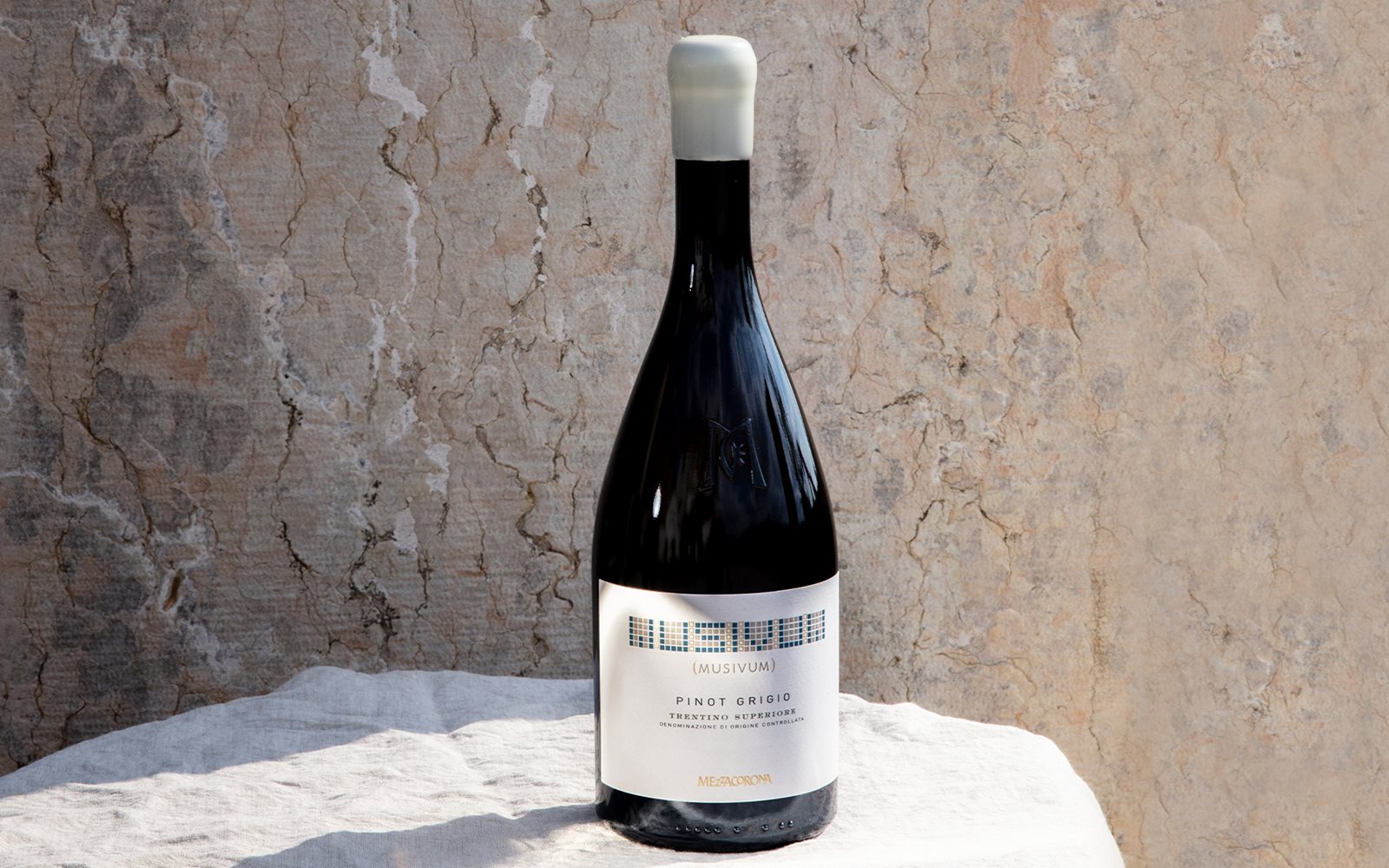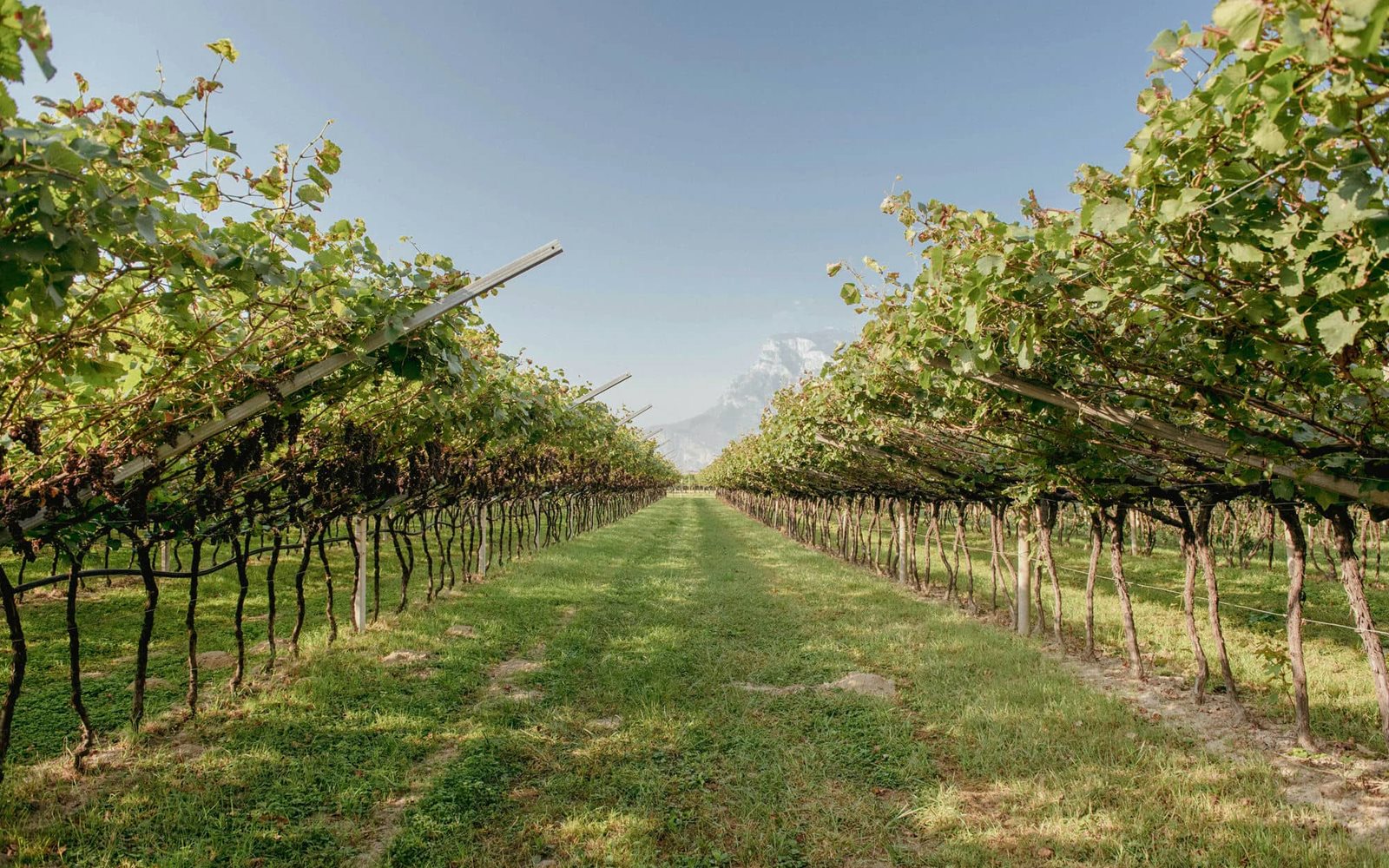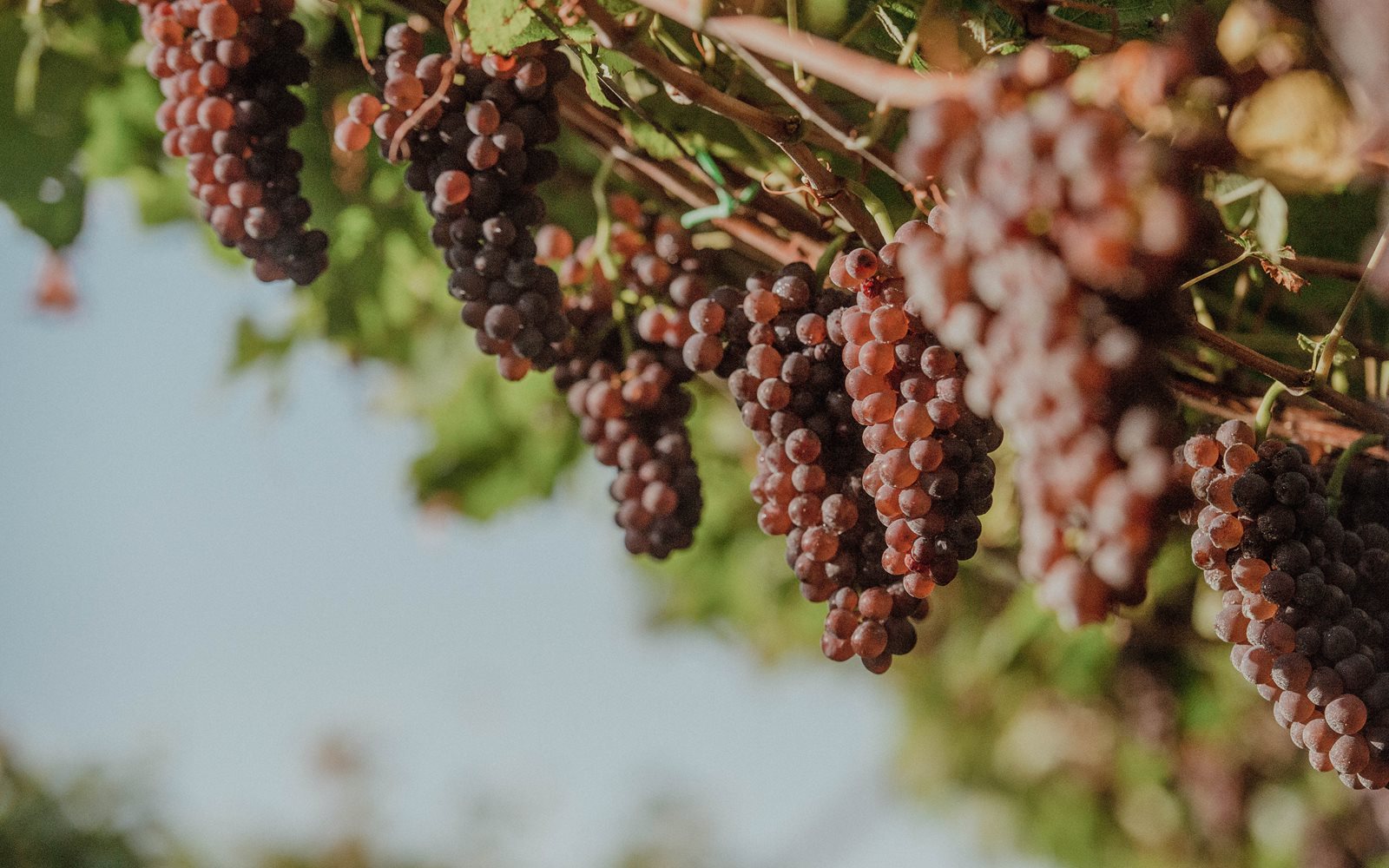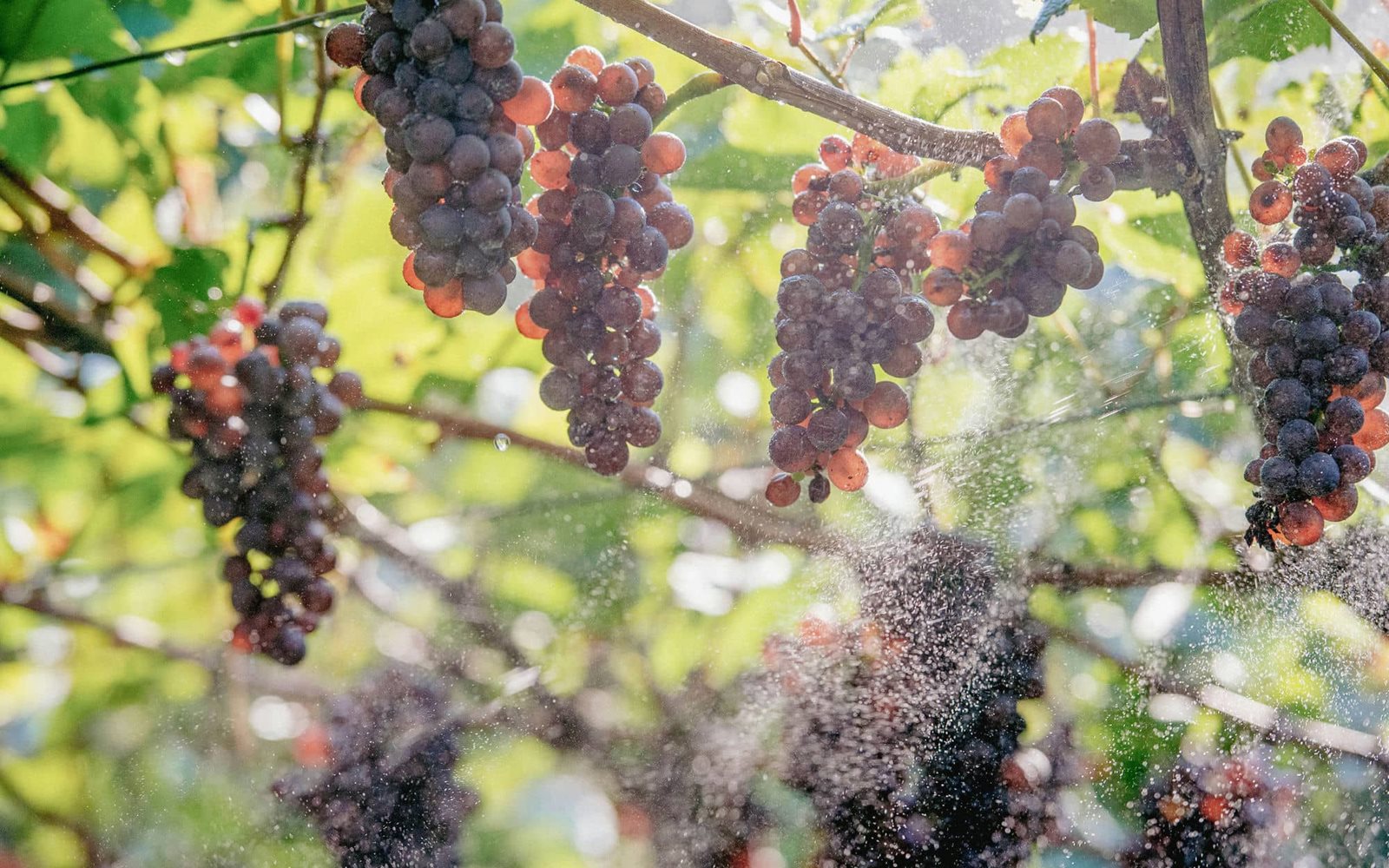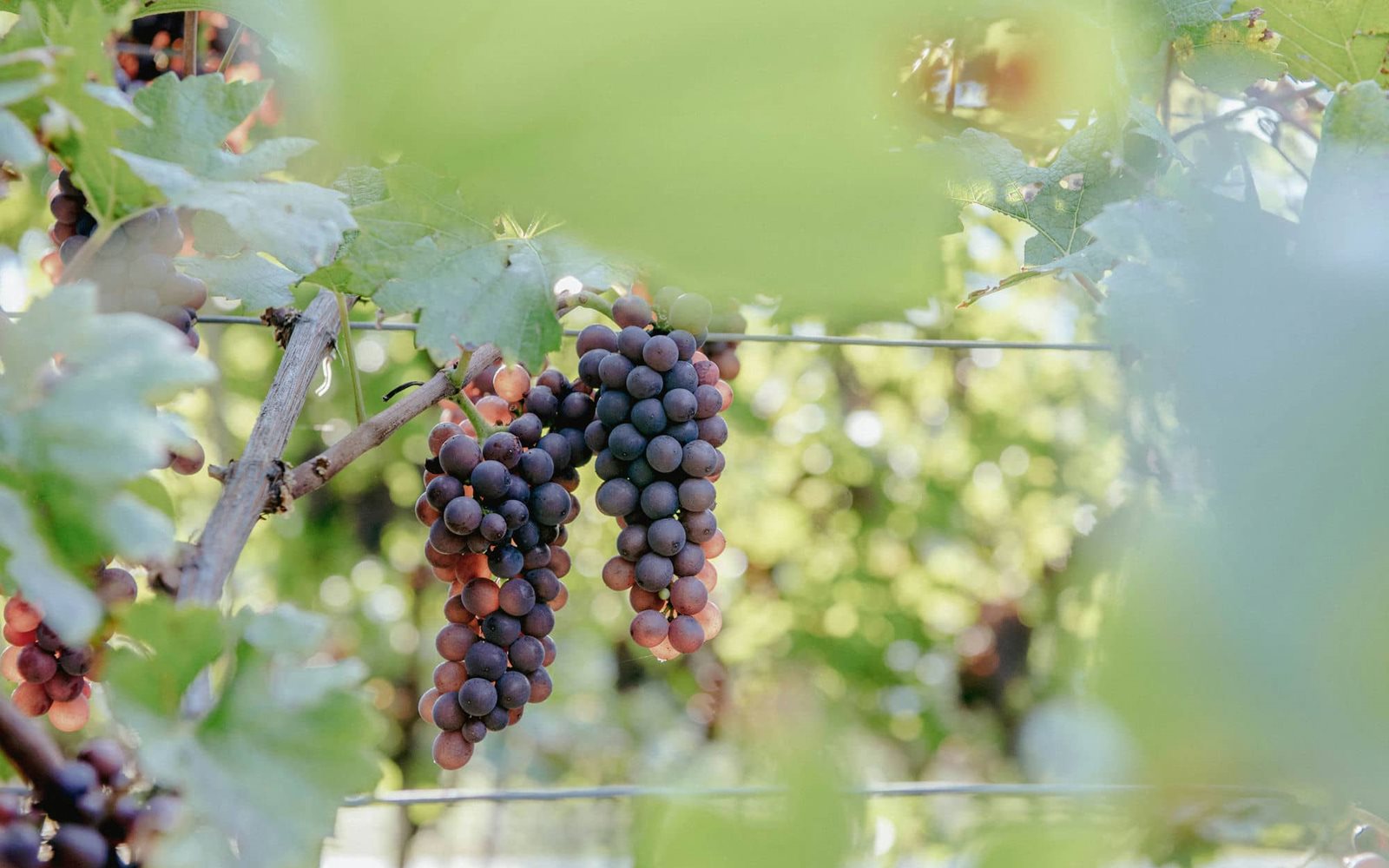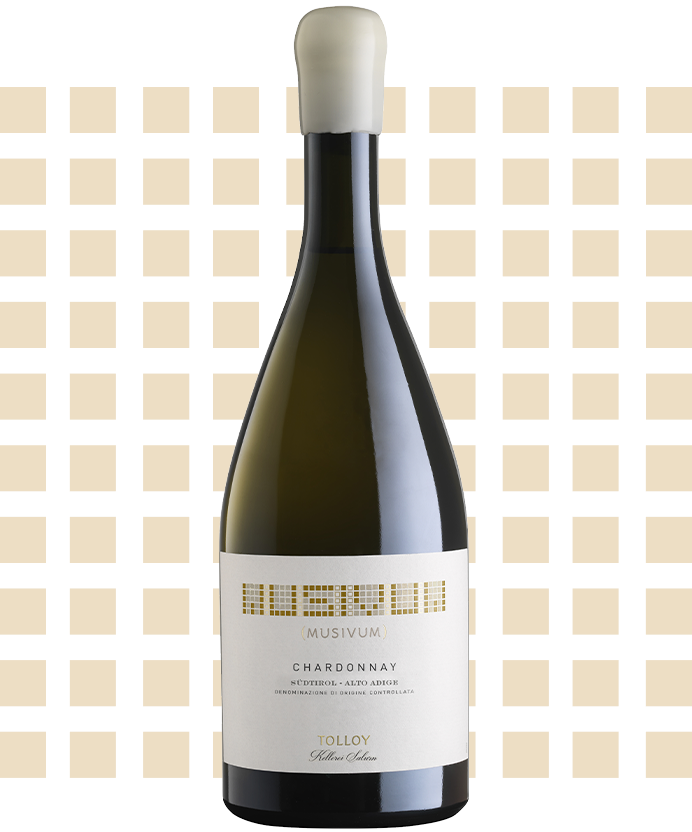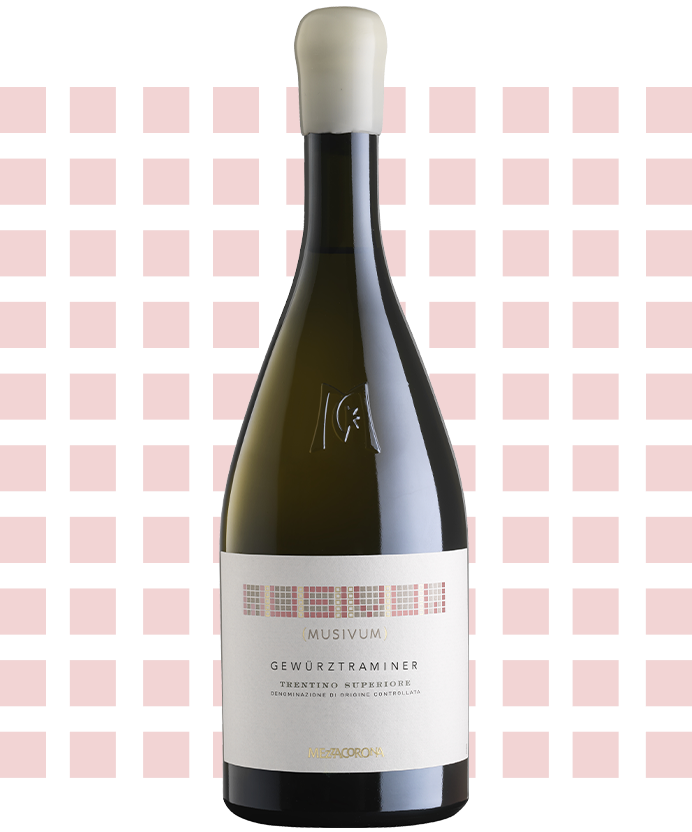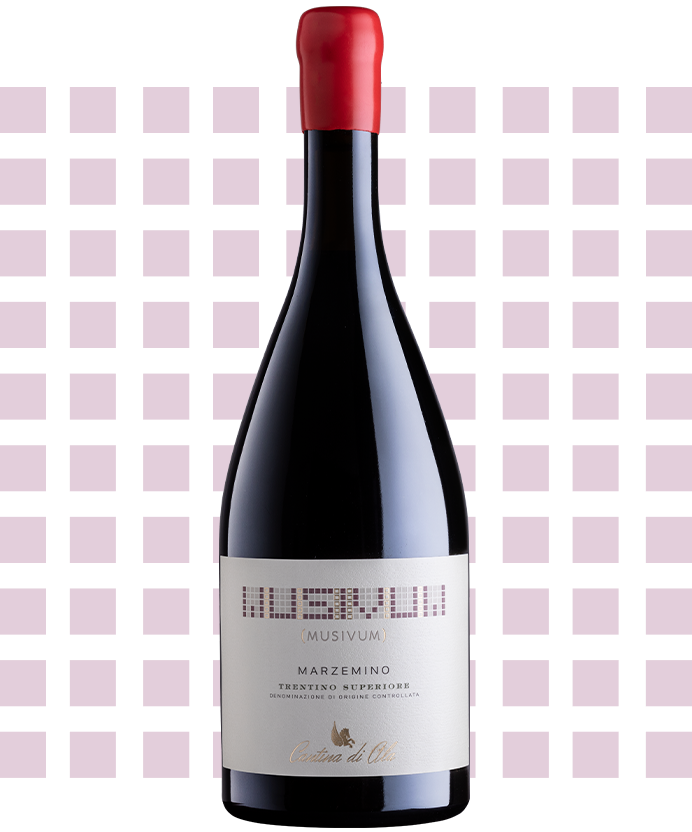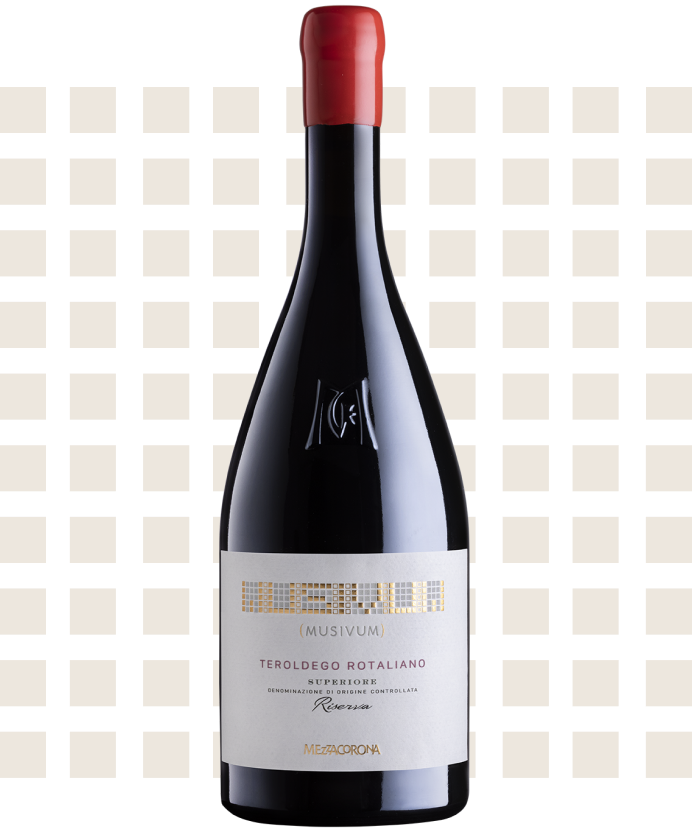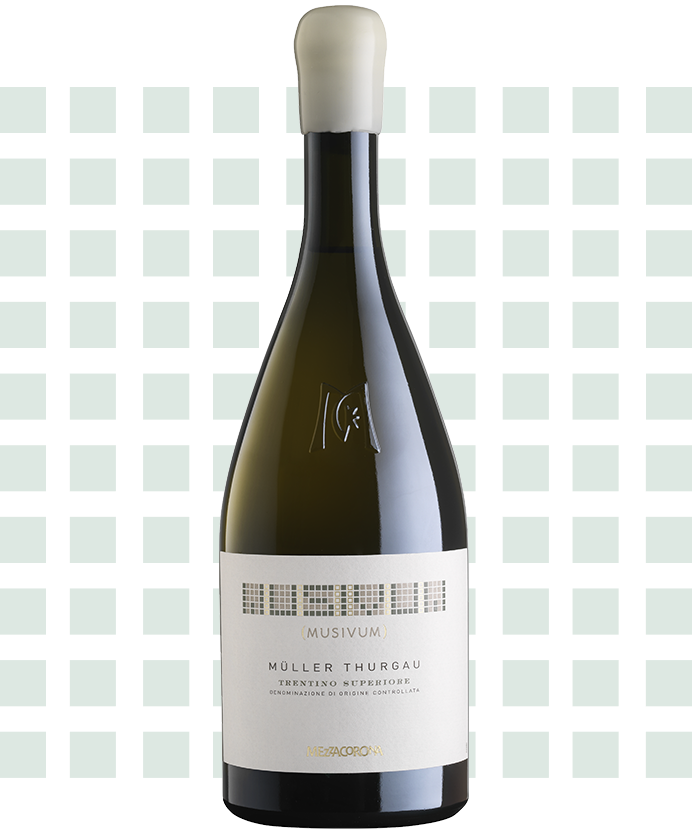
PINOT GRIGIO
TRENTINO DOC SUPERIORE

alcohol content 13,5%

3997 bottles

serving temperature 6-8 °C
About Pinot grigio
Deep straw yellow in colour, this is a complex, fragrant and persistent wine. It seduces with its fusion of ripe white fruit aromas, such as pear and white peach, delicately mixed with notes of sun-dried citrus, chamomile, stone pine and rhododendron honey. The hint of mountain gooseberry is intriguing, complemented by spicy notes of almond and walnut. Its harmonious balance between savouriness and persuasive acidity is enchanting.

The production area of Pinot Grigio Musivum is in the municipality of Mezzocorona, a classic cultivation area for this variety (also known formerly as 'Rülander'), as testified in historical documents. In the Almanacco Agrario of 1883, a technical publication by the Istituto Agrario di San Michele all'Adige, the researcher Mr.Mader recommended Pinot Grigio as a variety that had improved the viticultural heritage of that time thanks to its abundant and regular harvests and defined it as a very 'fine' white wine.
The area was first planted with vines in the 1950s. As a result, the soils have minimum thickness of the topsoil layer and a rather shallow water-table between 50 and 100 cm, and the soil type is very fertile. Even in periods of drought they have enough water, plus fertile soil which are indispensable characteristics for Pinot Grigio, a rather weak variety. In addition, the area allows the grapes to mature early, as it is set against imposing rock walls that provide protection from cold winds in late winter and early spring and these rocks reflect the sun’s heat which has a warming effect during all vegetative phases.
The area was first planted with vines in the 1950s. As a result, the soils have minimum thickness of the topsoil layer and a rather shallow water-table between 50 and 100 cm, and the soil type is very fertile. Even in periods of drought they have enough water, plus fertile soil which are indispensable characteristics for Pinot Grigio, a rather weak variety. In addition, the area allows the grapes to mature early, as it is set against imposing rock walls that provide protection from cold winds in late winter and early spring and these rocks reflect the sun’s heat which has a warming effect during all vegetative phases.
Production starts with a slightly delayed harvest so as to enhance the varietal characteristics and aromatic richness. The grapes are harvested by hand in the early hours of the day when the low temperatures preserve their freshness, with each bunch being selected in the field. They are then transported to the winery in perforated containers to guarantee the optimum fragrance and integrity of the bunches.
In the winery, the grapes undergo soft pressing to obtain free-run juice, this is then followed by natural decantation.
This takes place using selected yeasts at a controlled temperature of 18°C in special stainless steel tanks, designed exclusively for Musivum. Fifty per cent of the volume completes the last third of fermentation in the barrique cellar in 50 hl second-passage oak casks, where it also remains for the ageing phase. The other half completes fermentation in steel, where it continues the ageing phase on the yeasts.
During refinement, the fine lees, mainly made up of yeasts, undergo re-suspension every 15 days for the first 3 months and every 2 months thereafter. This is until the two halves (i.e. the fraction partially fermented and refined in wood with the one fermented and refined in steel) are mixed back together.
A deep straw yellow colour, it is a complex, fragrant and persistent wine. It seduces with a fusion of ripe white fruit aromas, such as pear and white peach, together with notes of sun-dried citrus, chamomile, stone pine and rhododendron honey. It has an intriguing hint of mountain gooseberry, complemented by spicy notes of almond and walnut. Its harmonious balance between savouriness and persuasive acidity is enchanting.
Wines
